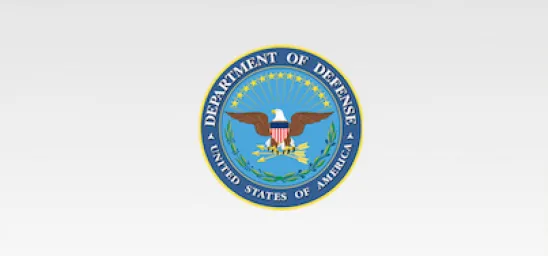The U.S. Government Accountability Office (“GAO”) recently released a new report finding that Army and Navy contracting officials were unaware of their oversight responsibilities regarding combating trafficking in persons. Though the U.S. Government has a zero tolerance policy when it comes to human trafficking, GAO’s report indicates that Department of Defense (“DOD”) officials have been lax in ensuring contractor compliance with anti-human trafficking requirements. Of particular concern are human trafficking activities by contractors on U.S. military bases overseas. Most commonly these cases involve foreign workers employed on U.S. Government contracts overseas that are subjected to labor abuses, such as wage withholding.[1]
Starting with the Trafficking Victims Protection Act of 2000, and as further detailed by the National Security Presidential Directive 22, Executive Order 13627, and FAR and DFARS provisions, U.S. Government contractors are prohibited from human trafficking and related activities. Though the DOD has policies and procedures in place to monitor and prohibit human trafficking, GAO’s new report “Human Trafficking: DOD Should Address Weaknesses in Oversight of Contractors and Reporting of Investigations Related to Contracts” found that the vast majority of contracting officers and contracting officer representatives with whom GAO spoke, said they were “unaware” of their anti-human trafficking oversight responsibilities. It is worth noting that GAO only interviewed fourteen Army and Navy contracting officials, so the sample size was small. But of those, only two were aware of their oversight responsibilities and many others were unaware of related requirements.
Further, U.S. Government contractors working abroad on large contracts (valued at $550,000 or more) are required to have an anti-human trafficking compliance plan, according to FAR 52.222-50. But DOD officials are not required “to request, review, or evaluate the plans.” The GAO found that in many cases the Government made no effort even to ensure contractors had a compliance plan in place, let alone assess its components. Relatedly, the Quality Assurance Surveillance Plan (“QASP”) may also require a combatting trafficking in persons clause and describe how the Government will monitor the contractor’s anti-trafficking performance. But, again, GAO found such monitoring does not appear to have been implemented in all cases. In response to a 2014 GAO report that also found deficiencies in DOD’s anti-human trafficking efforts, DOD drafted a sample checklist to monitor contractor human trafficking. But the sample checklist is merely aspirational, not mandatory, and has not been used on all contracts. Ultimately, the Government officials with whom the GAO spoke admitted they conducted little anti-trafficking-related activities.
The GAO report identified two hurdles to proper oversight: (1) a lack of awareness of anti-trafficking responsibilities and related guidance, and (2) a low prioritization of such responsibilities. The report indicates that many Government officials prioritized their duties relating to contract deliverables and allowed their human trafficking oversight responsibilities to fall to the wayside.
In response to the report, the U.S. Army Corps of Engineers issued clarifying guidance on the applicability of compliance plans to construction contracts. DOD officials also are discussing – but have not yet issued – additional clarifying guidance. In practice, this means that now is a good time for any contractor required to maintain a combatting trafficking in persons compliance plan to ensure all its ducks are in a row.
What Are The Requirements Of A Combatting Trafficking In Persons Compliance Plan?
There is no “one size fits all” compliance plan – it depends on the size and complexity of the contract. But, the plan is required by regulation to have certain key elements, including:
-
An anti-human trafficking awareness program to inform employees about the requirements (samples are available here: http://www.state.gov/j/tip/);
-
A human trafficking reporting process that:
-
prohibits any retaliation for reporting; and
-
gives all employees the Global Human Trafficking Hotline (1-844-888-FREE) and email (help@befree.org);
-
-
A recruitment and wage plan that:
-
Only permits the use of recruitment companies with trained employees;
-
Prohibits charging recruitment fees to employees/potential employees; and
-
Ensures wages meet applicable host-country legal requirements or explains any variance;
-
-
A housing plan ensuring applicable housing and safety standards are met, if the contractor or subcontractor intends to provide or arrange housing; and
-
Procedures to prevent all agents and subcontractors from engaging in human trafficking and to monitor, detect, and terminate any agents, subcontracts, or subcontractor employees engaged in such activities.
FAR 52.222-50. Contractors also are required to post their compliance plan at the workplace and on the contractor’s website, unless impracticable. Id. Further, contractors annually must certify that they have implemented a compliance plan and, after conducting due diligence, either that: (1) to the “best of the contractor’s knowledge and belief” certify neither the contractor, its agents, subcontractors, or their agents engaged in any such activities, or (2) if abuses relating to any human trafficking activities have been found, the contractor and/or subcontractor have taken the appropriate remedial and referral actions. Id.
As GAO’s report indicates, DOD’s apparent lax oversight may have resulted in anti-human trafficking compliance plans not being properly implemented or, never making it off of a contractor’s to-do list in the first place. The GAO’s report may, however, spur DOD to ramp up its anti-human trafficking oversight. Government contractors should make sure they are ready.
FOOTNOTES
[1] Though these policies do address sex trafficking, which often is what comes to mind when referencing “human trafficking” that is not the most common form of trafficking addressed in government contracting.


 />i
/>i

